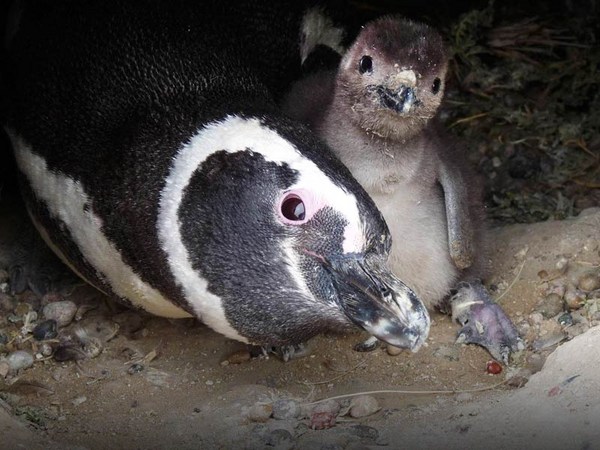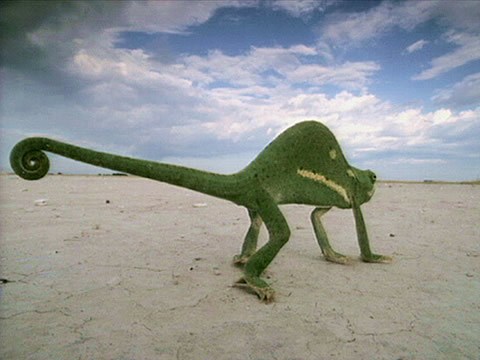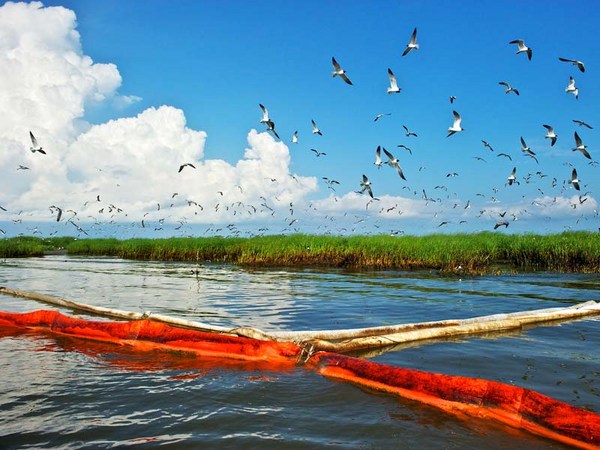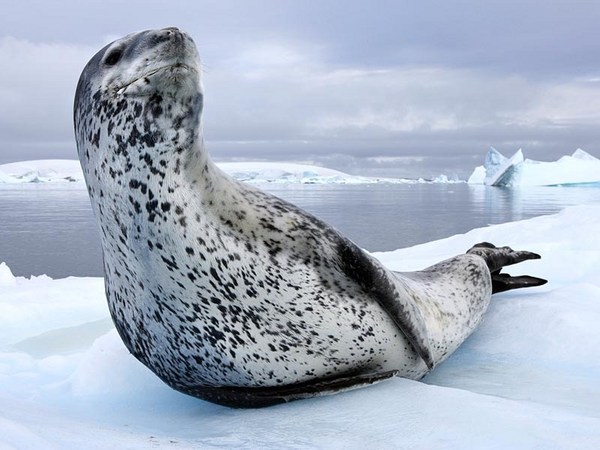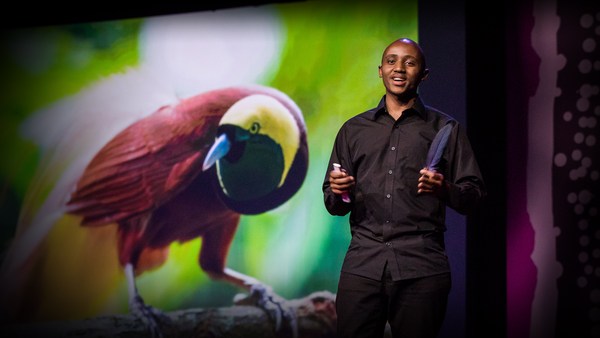For as long as I can remember, I have felt a very deep connection to animals and to the ocean. And at this age, my personal idol was Flipper the dolphin. And when I first learned about endangered species, I was truly distressed to know that every day, animals were being wiped off the face of this Earth forever. And I wanted to do something to help, but I always wondered: What could one person possibly do to make a difference? And it would be 30 years, but I would eventually get the answer to that question.
When these heartbreaking images of oiled birds finally began to emerge from the Gulf of Mexico last year during the horrific BP oil spill, a German biologist by the name of Silvia Gaus was quoted as saying, "We should just euthanize all oiled birds, because studies have shown that fewer than one percent of them survive after being released." And I could not disagree more. In addition, I believe that every oiled animal deserves a second chance at life. And I want to tell you why I feel so strongly about this.
On June 23, 2000, a ship named the Treasure sank off the coast of Cape Town, South Africa, spilling 1,300 tons of fuel, which polluted the habitats of nearly half the entire world population of African penguins. Now, the ship sank between Robben Island to the south, and Dassen Island to the north -- two of the penguins' main breeding islands. And exactly six years and three days earlier, on June 20, 1994, a ship named the Apollo Sea sank near Dassen Island, oiling 10,000 penguins, half of which died.
Now when the Treasure sank in 2000, it was the height of the best breeding season scientists had ever recorded for the African penguin, which at the time, was listed as a threatened species. And soon, nearly 20,000 penguins were covered with this toxic oil. The local seabird rescue center, named SANCCOB, immediately launched a massive rescue operation, and this soon would become the largest animal rescue ever undertaken.
At the time, I was working down the street. I was a penguin aquarist at the New England Aquarium. And exactly 11 years ago yesterday, the phone rang in the penguin office. And with that call, my life would change forever. It was Estelle van Der Merwe calling from SANCCOB, saying, "Please come help. We have thousands of oiled penguins and thousands of willing but completely inexperienced volunteers. And we need penguin experts to come train and supervise them." So two days later, I was on a plane headed for Cape Town with a team of penguin specialists.
And the scene inside of this building was devastating and surreal. In fact, many people compared it to a war zone. Last week, a 10-year-old girl asked me: "What did it feel like when you first walked into that building and saw so many oiled penguins?" And this is what happened. I was instantly transported back to that moment in time. Penguins are very vocal birds and really, really noisy, so I expected to walk into this building and be met with this cacophony of honking and braying and squawking. But instead, when we stepped through those doors and into the building, it was eerily silent. So it was very clear these were stressed, sick, traumatized birds.
The other thing that was so striking was the sheer number of volunteers. Up to 1,000 people a day came to the rescue center. Eventually, over the course of this rescue, more than 12-and-a-half thousand volunteers came from all over the world to Cape Town, to help save these birds. And the amazing thing was that not one of them had to be there. Yet they were. So for the few of us that were there in a professional capacity, this extraordinary volunteer response to this animal crisis was profoundly moving and awe-inspiring.
So the day after we arrived, two of us from the aquarium were put in charge of room two. Room two had more than 4,000 oiled penguins in it. Now, mind you -- three days earlier, we had 60 penguins under our care, so we were definitely overwhelmed and just a bit terrified -- at least I was. Personally, I really didn't know if I was capable of handling such a monstrous task. And collectively, we really didn't know if we could pull this off. Because we all knew that just six years earlier, half as many penguins had been oiled and rescued, and only half of them had survived. So would it be humanly possible to save this many oiled penguins? We just did not know.
But what gave us hope were these incredibly dedicated and brave volunteers, three of whom here are force-feeding penguins. You may notice they're wearing very thick gloves. And what you should know about African penguins is that they have razor-sharp beaks. And before long, our bodies were covered head to toe with these nasty wounds inflicted by the terrified penguins.
Now the day after we arrived, a new crisis began to unfold. The oil slick was now moving north towards Dassen Island, and the rescuers despaired, because they knew if the oil hit, it would not be possible to rescue any more oiled birds. And there really were no good solutions. But then finally, one of the researchers threw out this crazy idea. He said, "OK, why don't we try and collect the birds at the greatest risk of getting oiled" -- they collected 20,000 -- "and we'll ship them 500 miles up the coast to Port Elizabeth in these open-air trucks, and release them into the clean waters there and let them swim back home?"
(Laughter)
So three of those penguins -- Peter, Pamela and Percy -- wore satellite tags, and the researchers crossed their fingers and hoped that by the time they got back home, the oil would be cleaned up from their islands. And luckily, the day they arrived, it was. So it had been a huge gamble, but it had paid off. And so they know now that they can use this strategy in future oil spills.
So in wildlife rescue as in life, we learn from each previous experience, and we learn from both our successes and our failures. And the main thing learned during the Apollo Sea rescue in '94 was that most of those penguins had died due to the unwitting use of poorly ventilated transport boxes and trucks, because they just had not been prepared to deal with so many oiled penguins at once. So in these six years between these two oil spills, they've built thousands of these well-ventilated boxes. And as a result, during the Treasure rescue, just 160 penguins died during the transport process, as opposed to 5,000. So this alone was a huge victory.
Something else learned during the Apollo rescue was how to train the penguins to take fish freely from their hands, using these training boxes. And we used this technique again during the Treasure rescue. But an interesting thing was noted during the training process. The first penguins to make that transition to free feeding were the ones that had a metal band on their wing from the Apollo Sea spill six years earlier. So penguins learn from previous experience, too.
So all of those penguins had to have the oil meticulously cleaned from their bodies. It would take two people at least an hour just to clean one penguin. When you clean a penguin, you first have to spray it with a degreaser. And this brings me to my favorite story from the Treasure rescue. About a year prior to this oil spill, a 17-year-old student had invented a degreaser. And they'd been using it at SANCCOB with great success, so they began using it during the Treasure rescue. But partway through, they ran out. So in a panic, Estelle from SANCCOB called the student and said, "Please, you have to make more!" So he raced to the lab and made enough to clean the rest of the birds. So I just think it is the coolest thing that a teenager invented a product that helped save the lives of thousands of animals.
So what happened to those 20,000 oiled penguins? And was Silvia Gaus right? Should we routinely euthanize all oiled birds because most of them are going to die anyway? Well, she could not be more wrong. After half a million hours of grueling volunteer labor, more than 90 percent of those oiled penguins were successfully returned to the wild. And we know from follow-up studies that they have lived just as long as never-oiled penguins, and bred nearly as successfully.
And in addition, about 3,000 penguin chicks were rescued and hand raised. And again, we know from long-term monitoring that more of these hand-raised chicks survive to adulthood and breeding age than do parent-raised chicks. Armed with this knowledge, SANCCOB has a chick-bolstering project, and every year, they rescue and raise abandoned chicks, and they have a very impressive, 80 percent success rate. This is critically important, because one year ago, the African penguin was declared endangered. And they could be extinct in less than 10 years if we don't do something now to protect them.
So what did I learn from this intense and unforgettable experience? Personally, I learned that I am capable of handling so much more than I ever dreamed possible. And I learned that one person can make a huge difference. Just look at that 17-year-old. And when we come together and work as one, we can achieve extraordinary things. And truly, to be a part of something so much larger than yourself is the most rewarding experience you can possibly have.
So I'd like to leave you with one final thought and a challenge, if you will. My mission as The Penguin Lady is to raise awareness and funding to protect penguins. But why should any of you care about penguins? Well, you should care because they're an indicator species. And simply put: if penguins are dying, it means our oceans are dying. And we ultimately will be affected, because, as Sylvia Earle says, "The oceans are our life-support system." And the two main threats to penguins today are overfishing and global warming. And these are two things that each one of us actually has the power to do something about. So if we each do our part, together, we can make a difference, and we can help keep penguins from going extinct. Humans have always been the greatest threat to penguins, but we are now their only hope.
Thank you.
(Applause)

